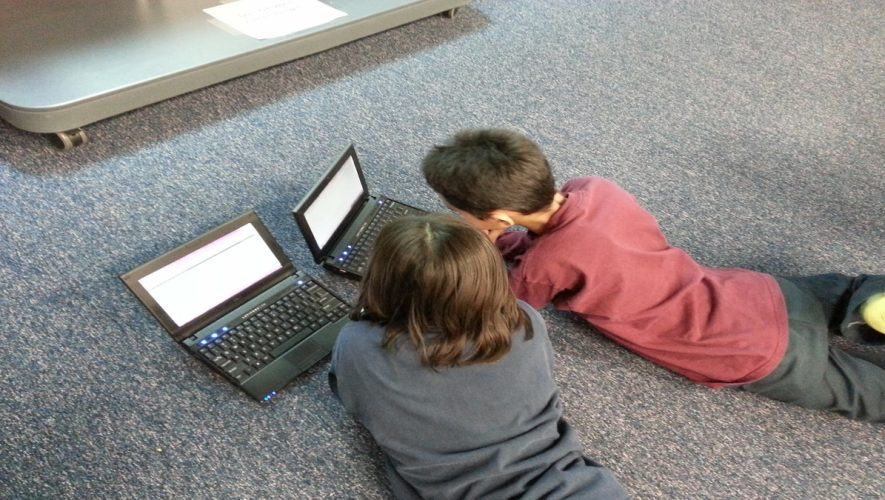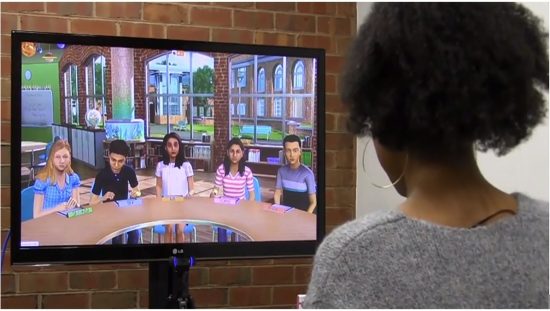Computer-Supported Collaborative Learning (CSCL)
Developments in ICT offer increasing possibilities for collaborative learning. Technology based learning environments can provide advanced means for the production of knowledge and constructive communication, and interactive and collaborative learning in (and between) classrooms and between teachers and learners. CSCL is one such example.
Computer-Supported Collaborative Learning (CSCL) refers to the activity of peers interacting with each other for the purpose of learning and with the support of information and communication technologies (ICT).
Phases of Computer-Supported Collaborative Learning
Design phase
Fruitful interaction needs to be carefully planned and structured considering the pedagogical, curricular and technological elements connected to the learning process that’s being designed. Research suggests the selection of problem/project-based learning or at least complex tasks that allow for the incorporation of generic, transversal and course competences associated to CSCL.
The selection of technologies should be aligned with these objectives, promoting a fluent interaction both at the cognitive and the social level, to sustain problem solving through collaboration and effective teacher-student and student-student communication.
Scripting collaboration implies the design of a model to guide students to an understanding of the philosophy of collaboration: why and how they are going to interact, how this will lead them to different learning outcomes, what kind of exchanges are expected of them and how they will form the group and plan the task resolution.
Implementation phase
In CSCL, each individual re-structures previous knowledge and learns to cooperate with others through socio-cognitive negotiation; therefore interaction is established at these three levels, the social, cognitive and organizational level that directs the flow of group exchange to reach the established goals.
Research is conclusive on the need for social interaction, to promote emotional intra-group support and to recognize individuals at a personal level. To strengthen the commitment of the group towards the resolution of the common goal, students need to establish a sense of community which cares for emotions and motivation, leading to a more fluent communication and to feelings of belonging. Indeed, the lack of social interaction results in poor cognitive exchange and academic failure, associated to the feelings of isolation. In this sense, teacher-student interaction should focus on motivation and support, as well as on immediate quality feedback.
Cognitive interaction occurs through the negotiation of a shared meaning or knowledge convergence, where the group makes an effort to integrate every individual contribution into a common construct and group members are exposed to knowledge convergence and divergence.
Research highlights that even at well-designed CSCL processes students often fail to establish a fruitful learning exchange, since group organization is often a challenge. That’s why teachers should support students and redirect to a consistent socio-cognitive process leading to what is called the socio-metacognitive expertise. It is important to note that at the implementation phase, group organization will highly rely on students. Self-regulation will allow for the building of the group identity and will promote the training on the associated competences as well as the opportunities for free cognitive divergence and convergence.
At this stage, teacher presence needs to be very active and alert, to avoid feelings of isolation associated to online learning with poor teacher-student and student-student interaction, as well as to ground the basis for cognitive and social presence.
Assessment phase
In any learning process, assessment should establish a coherence with learning methods and inform students of the type of achievements expected individually. In CSCL the learning process is articulated through cognitive and social interaction; that’s why assessment in CSCL should integrate both the process of interaction and the result of interaction, assessing student’s competencies linked to collaboration as well as task results.
In order to keep a more coherent framework, if learning has occurred during interaction, assessment should also involve students in peer assessment, integrating the cognitive and social elements in the process. Considering the literature review and the importance of the implementation phase, we designed a study to determine the learners’ perceptions about the aspects that shape the interactions that occur in the CSCL implementation phase.
OTHER RELATED POSTS



